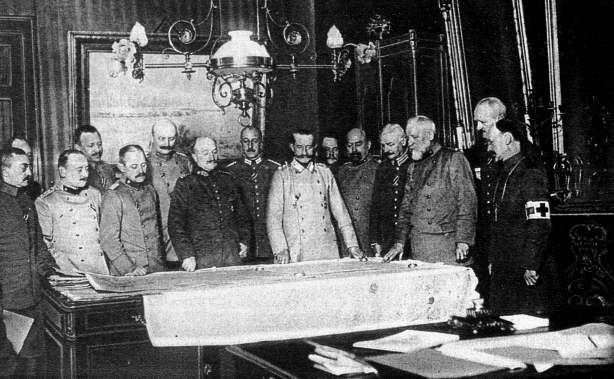The Censored Press in the Great War
As the invasion of Belgium by the German troops progressed, the Belgian press ceased its activities. If the military operations disturbed the journalists in their work, it was mainly the establishment of the German occupying authorities that provoked the end of press activity. For most of the editors, the imposed control was unacceptable. However, in some exceptional cases, the German military authorities encouraged the preservation of certain titles such as L’Ami de l’Ordre in Namur or the Vooruit in Ghent. Less politically coloured publications also remained, such as the newly founded 1914 illustré which continued to publish photographs of the war until the beginning of 1918.
The first months of the occupation
The decision to stop the publication of the principal newspapers would thus seem to have been taken by the editorial management rather than the occupier who sought to develop efficient means of communication with the population of the occupied territories.
Nonetheless, the papers that continued to appear or that were founded in the autumn of 1914 were submitted to a severe censorship by the military authorities. This task was subsequently taken over by a civil administration in accordance with the decree of 13 October 1914. The work of this administration was however far from efficient and not guided by a uniform centralised policy. This situation was however quite soon adjusted.

A strict control
The control of the press became an important issue in the context of the propaganda war which developed at the turning point of 1914-1915. A central control organ was created in January 1915 and subsequently integrated in the political department of the General-Gouvernement in Belgien, led by Oscar von der Lancken-Wakenitz and whose activity reports were published in 2004. These reveal the main lines of the press policy installed by the occupier from the beginning of 1915. The logic of these is obvious. Information published in occupied Belgium could not contain military information to the disadvantage of Germany and its Allies, could not give information concerning the actions of the Belgian government in exile and absolutely had to avoid publishing articles that would “maintain or strengthen the hatred of the population against Germany”. The application of these rules was entrusted to offices of censorship within the different editorial offices. These on the other hand had to rely exclusively on the information bulletins of a Dutch press agency, financed by the German authorities.
A great success
In the course of the four occupation years, the General-Gouvernement in Belgien used the censored press unrestrainedly to defend its war goals. New papers were launched mostly to create a larger audience for the activities of the Flemish activists. Nearly 500,000 copies appeared in occupied Belgium in the spring of 1915. They were subjected to an increasingly severe censorship, a service which however did not always operate in a uniform manner. If the most docile press organs meticulously followed the instructions of the political department, others refused to treat particular issues. This was notably the case for francophone newspapers that refrained from communicating on the administrative separation of Belgium from 1917 onwards. Among the most frequently read newspapers, the Brussels press was the most important with the Bruxellois and La Belgique which had a circulation of more than 100,000 copies each. Of the Antwerp activist papers (Het Vlaamsche Nieuws , Antwerpsche Courant) several thousand copies were published. In Wallonia, only the Ami de l’Ordre had a relatively wide circulation.

Final act
From the beginning of 1918, the censored press met with more and more difficulties. The rise in the production cost entailed a price rise and a reduction of the number of printed pages. Certain titles disappeared as a result of material difficulties. Finally, the armistice gave the final blow to the majority of the newspapers that had compromised with the German censorship. In many places, their management and staff suffered the anger of the liberated population. Finally, the courts prosecuted many actors of the censored press in the Great War for collaboration.
Axel Tixhon
Bibliography
- Michaël Amara en Hubert Roland, Gouverner en Belgique occupée. Oscar von der Lancken-Wakenitz. Rapports d’activité 1915-1918. Edition critique, Brussel, Pieter Lang, 2004.
- Hubert De Smet, De gecensureerde dagbladpers in België gedurende Wereldoorlog I, Gent, RUG, 1974.
- José Gotovitch, Contribution à l’histoire de la presse censurée. 1914-1918, Onuitgegeven licentiaatsverhandeling, Brussel, ULB, 1961.


